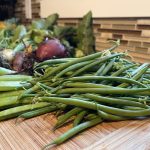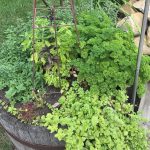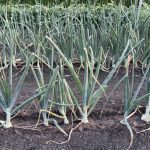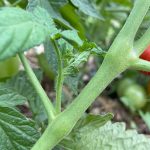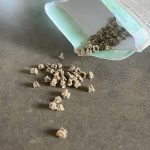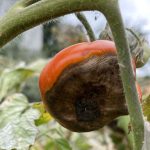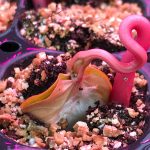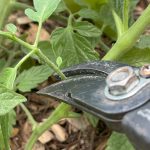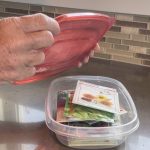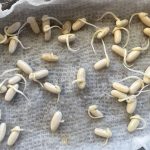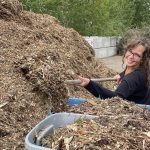As the weather cools and we harvest what’s left of our gardens, you may be wondering what to do with any surplus of herbs you may have. If you have fresh herbs that you want to preserve, the best options are to freeze them or dry them — both will work beautifully for sprucing up your winter meals! If you’re wondering how to freeze or dehydrate herbs, read on!
The Benefits of Storing Garden Herbs
I like to freeze or dehydrate the herbs that I grow in my own garden because they taste so much more flavourful than store bought herbs, AND I know what is in them.
I know how they are grown, I know the fertilizer and soil additives I used, and I also know what’s been done to them or put on them in the storage process.
I don’t use any preservatives when I dry or store my herbs and that gives me confidence in their food quality.
Different Uses for Dehydrated or Frozen Herbs
Dehydrated herbs are easy to store and incredibly versatile in cooking and baking.
Frozen herbs are a little different. Freezing bursts the cell wall structure which causes them to lose their turgor and go limp, so I use frozen herbs like Basil, Cilantro, Parsley, Rosemary, and Dill to offer garden fresh flavour in cooked items like sauces, soups, and foods that are baked like pizza toppings.
Steps to Freezing or Dehydrating Herbs


The initial steps to preserving herbs are all the same, whether drying or freezing.
First, I only use healthy, well hydrated herbs for storage and I cull out any yellowed or damaged leaves.
Next, I wash them thoroughly and let them dry.
I pinch large leaves off of their stalks, like Basil; and leave smaller leaves, like Oregano and Thyme, on the stalks.
About Freezing Herbs


I freeze herbs in freezer-grade Ziplocs, eliminating as much air as possible, and I label them with the date.
Large leaves, like Sage and Basil, can be rolled up in paper towels to prevent crushing them in the freezer.
About Drying Herbs

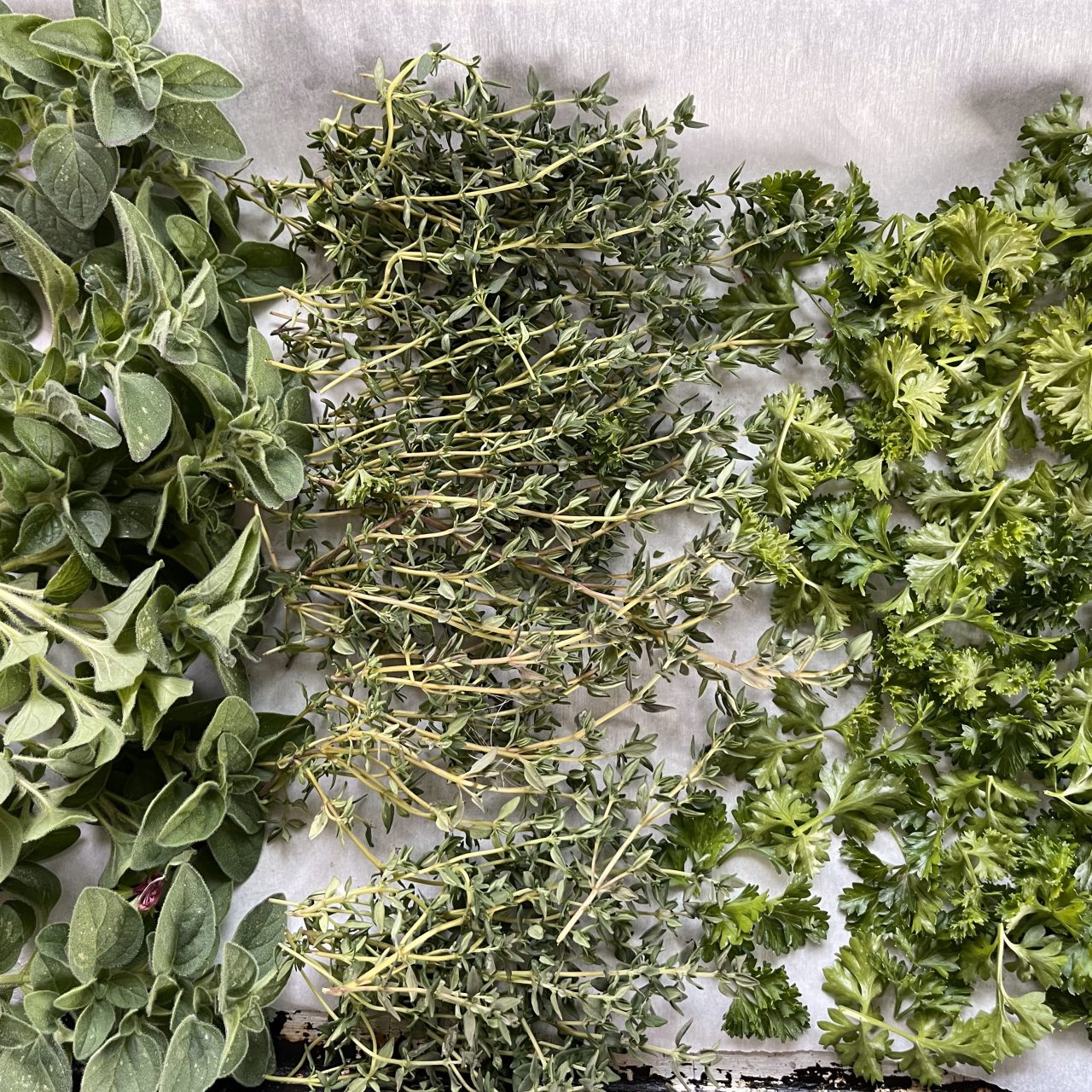
Herbs can be dehydrated in a dehydrator, but don’t let that stop you, ovens work perfectly well, too.
I lay the herbs flat in a thin layer to so they can dry easily.
Set the drying temperature as instructed with the dehydrator or in the oven at 125-150 F.
When the leaves are crispy, they’re done.
Storing Herbs
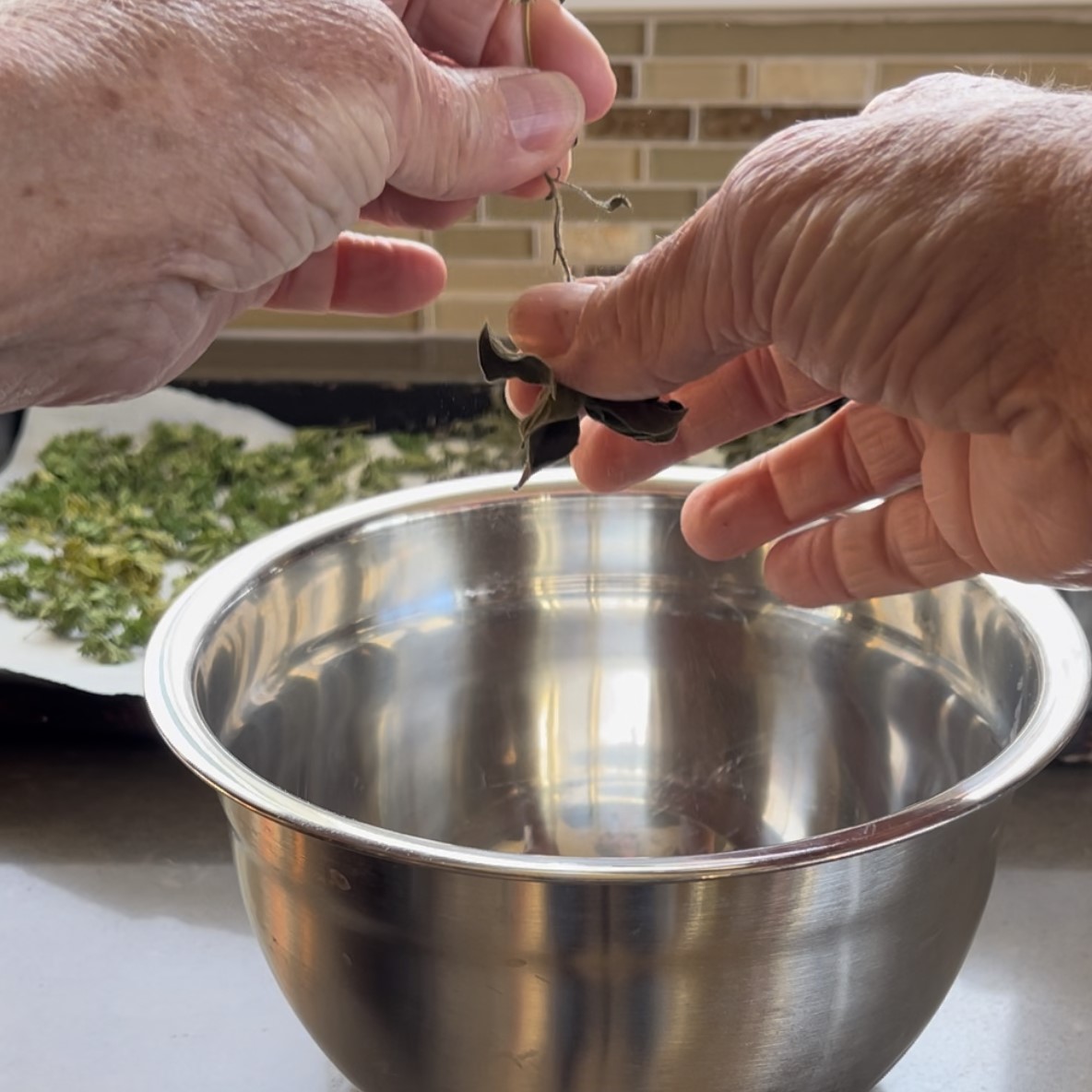

Herb leaves can be stored striped off the stalks or left on.
I prefer to store dehydrated herbs in glass canning jars and a cool dark place will preserve their colour and flavour.
Remember to label them with the date or year, I keep both my frozen and dried herbs for up to 1 year.
Whenever using dried herbs, remember to crush them first to release the oils of their flavours and aromas.
Bon Appetit!
© Sharon Wallish Murphy, Gardening with Sharon







